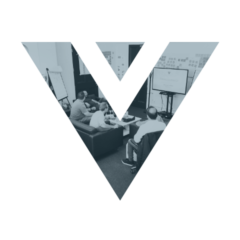The bedrock of a healthy work culture
Let’s build a great culture
A healthy culture and work environment leads to happy and productive employees; everyone wants to come to work because they are having fun and are mentally challenged at the same time. I’ve experienced different company cultures during my working life and have developed a strong preference. Now, as the co-founder of a technology start-up (http://www.elementalconcept.com), we have the exciting opportunity to build an organisational culture from the ground up. The bonds, loyalty and trust between people is the most important thing here. We are all friends, because we have made an effort to get to know each other and we like each other! This article describes some of the foundation principles of our culture and why we have chosen them.
Diversity breeds tolerance
For any organisation, recruitment is one of the prominent areas of focus when building the right culture and we are no different in that respect. We’ve been lucky to kick off with a small team that we know very well from a previous company, so have only needed to hire into one position so far. We recruit for attitude, as well as skills; the ability to empathise and trustworthiness are what we look for in our people.
When recruiting, the cultural fit is key. Saying that, we don’t look for one personality type only; diversity is important and assembling different kinds of thinkers tends to generate the best ideas and solutions. In our case, out of 12 people so far, the diversity is amplified by the number of different nationalities we have in the office; Belgian, Corsican, English, Irish, Italian, Latvian, Pakistani and Russian!
When it comes to creative inspiration, job titles and hierarchy are meaningless, so we try to avoid it wherever possible. We strive not to constrain people by putting them in strict boxes or roles. We want our people to shine in areas in which they are strong, then offer them the opportunity to explore new areas. In this way, we have an office full of teachers.
Autonomous, Cross-Functional Teams
In a modern organisation, the team is the unit to be assessed, rather than the individual; the way the people in a team interact with one another is the key to success and the best teams are made up of people who complement each other.
“There will be no stars in this team, we need everybody – everybody has a valid perspective” Frank Maslin
Autonomous, cross-functional teams are a bedrock of Agile methods. Populating a project team with people who can cover all areas in the project minimises waste and broadens individual skillsets. For example, a cross-functional team can be made up of developers, network engineers and UX/UI designers. This is a departure from more traditional management methods, which espouse functional teams and top-down communication. We augment the typical command and control style management with bottom-up communication; the managers loosen their control and accept risk.
For a cross-functional team to work well, each team member needs to become genuinely interested in the other team members, including the skills they have. In this way, everyone becomes a teacher and a student, which generates motivation, pride and enthusiasm. As a matter of principle, we don’t stand our ground for the sake of it and our guys spend time to understand the other person’s point of view. The alternative is that you become entrenched in your own point of you if something doesn’t align with your ideas, which is a close-minded way to operate.
“If there is one secret of success, it lies in the ability to get the other person’s point of view and see things from that person’s angle as well as your own” Henry Ford
Freedom to Fail
We are problem solvers; it’s what we do day in and day out. The first step in solving problems is, of course, to uncover the problems that exist. We delve deeply into our client’s companies to understand everything that drives them. By engaging with them, through collaboration and discussion, we draw out the fundamental issues facing them and strategise the best solution to these going forward. Our team are driven by solutions and adding value. We strive to find these crux points so we can help our clients progress.
In solving problems, we give our people the room to experiment. They are free to try different things, run experiments and very importantly not to be afraid to fail. We expect problems and empower staff to solve them on their own. Most importantly, we respond well to failure. Ideas, solutions, systems will fail often – what doesn’t work out is merely a learning experience and fodder for the innovation cycle.
Get in touch
As our organisation grows, we have a challenge to maintain the culture I have described. I would love to hear from anyone who has had experience in maintaining a family-style culture in a growing organisation or has any views on the delicate balance between top-down and bottom-up communication.





